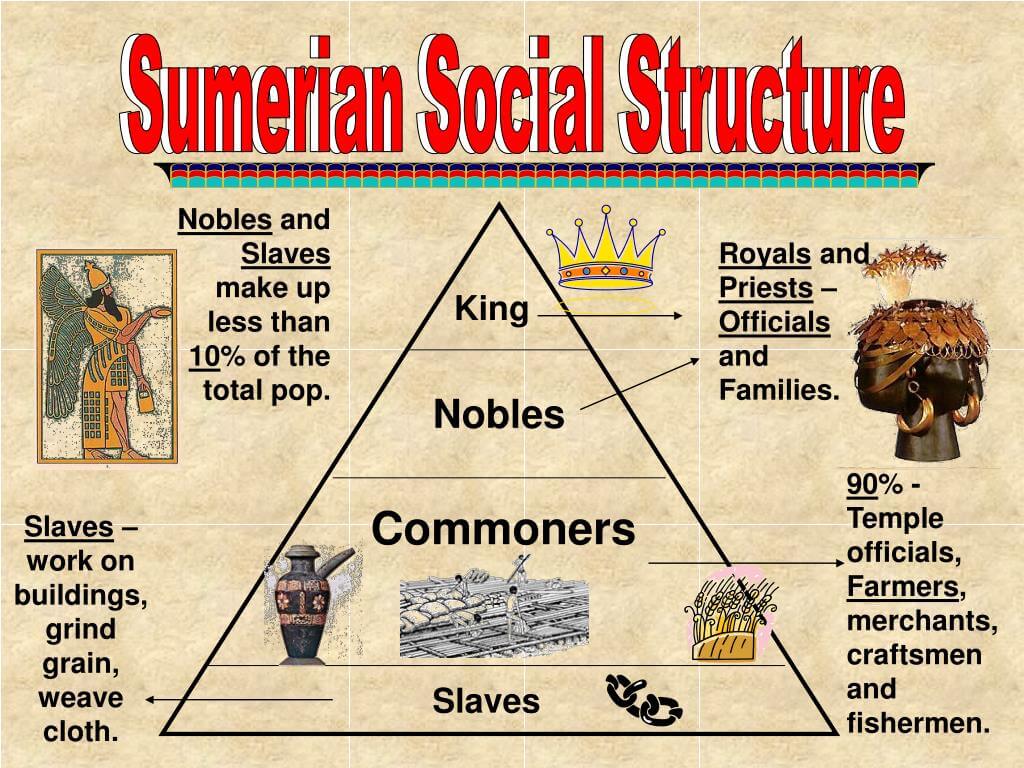The Sumerians, one of the earliest civilizations known to humankind, flourished in the region of Mesopotamia around 4500 to 1900 BCE. Their society was a complex tapestry woven from various social classes, each with its own role and significance. Understanding these social classes of Sumerians is crucial to grasping the essence of their culture, economy, and governance. The stratification of Sumerian society reflects the values and dynamics of their time, shedding light on how they organized themselves and interacted with one another.
Within the Sumerian civilization, social classes were not merely a reflection of wealth or power; they also represented the intricate relationships between individuals, their families, and the community. From the ruling elite to the laborers, each class played an essential role in maintaining the fabric of Sumerian life. The upper classes wielded significant power, while the lower classes were often engaged in labor-intensive tasks vital to the economy. Despite their differences, these classes were interconnected, contributing to a society that was both diverse and cohesive.
Exploring the social classes of Sumerians provides insight into their religious beliefs, economic practices, and political structures. This understanding allows us to appreciate the complexities of their civilization, highlighting how class distinctions influenced daily life and shaped the trajectory of Sumerian history. This article delves into the various social classes of Sumerians, examining their roles, interactions, and the impact they had on one another, ultimately revealing the rich tapestry of Sumerian society.
What Were the Main Social Classes of Sumerians?
The Sumerian society was structured into distinct social classes, which can be broadly categorized into the following:
- 1. Nobility: This class included kings, priests, and high-ranking officials who held significant power and influence.
- 2. Free Citizens: Comprising skilled workers, merchants, and landowners, this class had more privileges than the lower classes.
- 3. Dependent Farmers: These individuals worked on land owned by nobles and were often bound to their lords.
- 4. Slaves: The lowest class, slaves had no rights and were often prisoners of war or born into servitude.
How Did Nobility Influence Sumerian Society?
The nobility in Sumerian society played a pivotal role in governance and religion. They were not only responsible for maintaining order but also acted as intermediaries between the gods and the people. Their wealth allowed them to build impressive temples and palaces, serving as centers of political and religious life.
What Were the Roles of Priests in Sumerian Society?
Priests held a unique position within the nobility, often leading religious ceremonies and rituals that were vital to Sumerian culture. They were believed to have a direct connection with the divine, which granted them considerable authority over the populace. The priesthood was critical in maintaining the favor of the gods, ensuring agricultural prosperity and social stability.
What Impact Did Free Citizens Have on the Economy?
Free citizens formed the backbone of the Sumerian economy. Their skills in various trades, such as pottery, metalworking, and textiles, contributed to the development of commerce and trade networks. Free citizens often participated in local markets, enhancing economic interdependence within the community.
How Were Dependent Farmers Treated in Sumerian Society?
Dependent farmers, while not slaves, faced challenges as they worked the land for the nobility. They were required to pay a portion of their harvest to their lords, which often left them with meager resources. Despite their hardships, dependent farmers were crucial to sustaining the agricultural economy, which was the lifeblood of Sumerian civilization.
What Was the Condition of Slaves in Sumerian Society?
Slaves represented the lowest tier of Sumerian society, often subjected to harsh conditions. They could be acquired through warfare, debt, or as punishment for crimes. Despite their status, some slaves could earn their freedom, highlighting a dynamic aspect of Sumerian social structure.
How Did Social Classes Affect Daily Life in Sumer?
The social classes of Sumerians significantly influenced daily life, from the types of work individuals performed to their access to education and religious practices. The upper classes enjoyed luxuries and privileges, while those in the lower classes faced challenges that shaped their experiences and opportunities.
What Were the Interactions Between Different Social Classes?
Interactions among the social classes of Sumerians were often dictated by economic needs and social norms. Trade relationships existed between free citizens and the nobility, while dependent farmers relied on the support of the upper classes for protection and resources. Despite the rigid structure, there were instances of cooperation across classes, especially in times of crisis.
How Did Social Classes Influence Sumerian Governance?
The governance of Sumer was heavily influenced by its social classes. Nobility occupied key leadership roles, shaping laws and policies that often favored their interests. However, the voices of free citizens also played a role in local governance, particularly in city-states where assemblies or councils could influence decision-making.
Conclusion: The Legacy of Sumerian Social Classes
The social classes of Sumerians were integral to the functioning of their civilization, reflecting the complexities of their society. Understanding these classes provides valuable insight into the dynamics of power, labor, and culture in ancient Mesopotamia. The interplay between the different social classes not only shaped the daily lives of Sumerians but also laid the groundwork for future civilizations. The legacy of their social structure continues to resonate, reminding us of the importance of social organization in human history.




